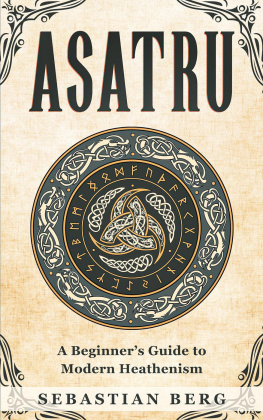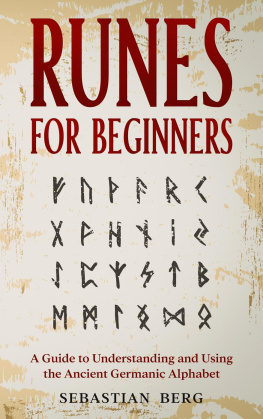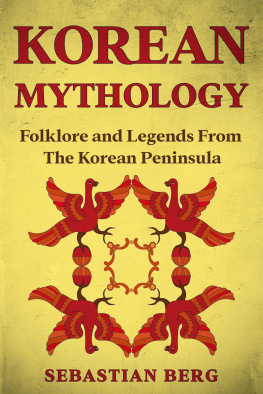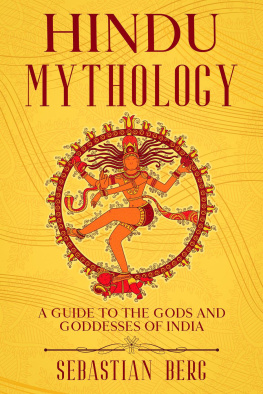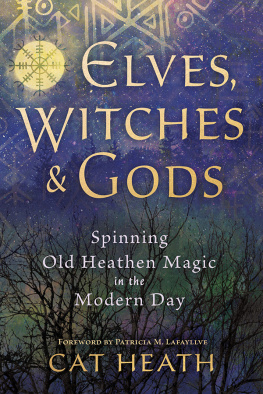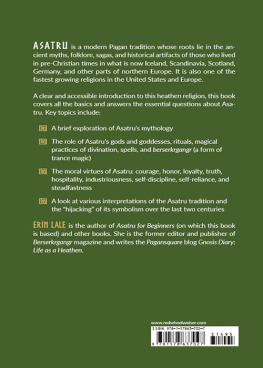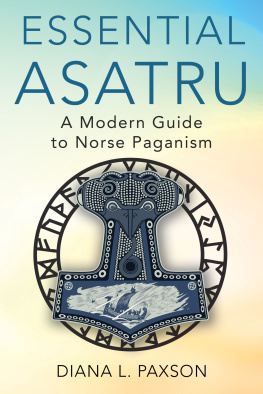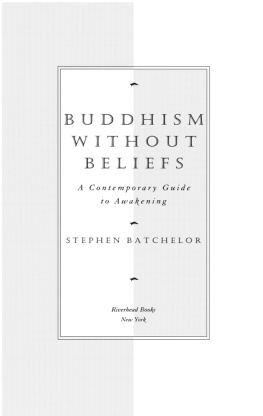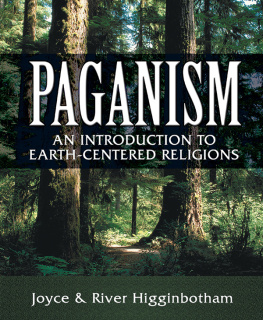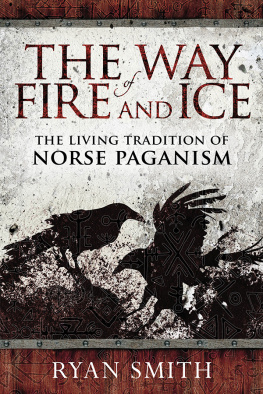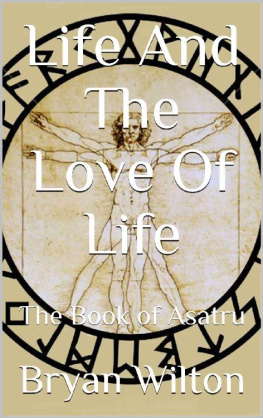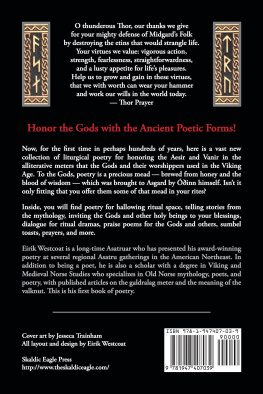Also by Sebastian Berg
Paganism for Beginners :An Introduction to Pagan Beliefs
Celtic Mythology: Religion of The Iron Age Celts
Runes for Beginners: A Guide to Understanding and Using the Ancient Germanic Alphabet
Norse Mythology: Gods, Myths, and Religion
Asatru: A Beginners Guide to Modern Heathenism
Egyptian Mythology: Myths and Gods of Ancient Egypt
Wicca: A Beginners Guide to Pagan Witchcraft
African Mythology: Gods and Mythical Legends of Ancient Africa
Cherokee Mythology: Myths, Legends and Spiritual Beliefs
Aztec Mythology: The Gods and Myths of Ancient Mexico
Maya Mythology: Myths and Folklore of the Mayan Civilization
Hindu Mythology: A Guide to the Gods and Goddesses of India
Moon Spells for Witchcraft: A Guide to Using the Lunar Phases for Magic and Rituals
Korean Mythology: Folklore and Legends from the Korean Peninsula
Japanese Mythology: Mythical Creatures and Folklore from Japan
Asatru
A Beginners Guide to Modern Heathenism
Copyright 2020 -Creek Ridge Publishing All rights reserved.
The contents of this book may not be reproduced, duplicated or transmitted without direct written permission from the author.
Under no circumstances will any legal responsibility or blame be held against the publisher for any reparation, damages, or monetary loss due to the information herein, either directly or indirectly.
Legal Notice:
This book is copyright protected. This is only for personal use. You cannot amend, distribute, sell, use, quote or paraphrase any part or the content within this book without the consent of the author.
Disclaimer Notice:
Please note the information contained within this document is for educational and entertainment purposes only. Every attempt has been made to provide accurate, up to date and reliable complete information. No warranties of any kind are expressed or implied. Readers acknowledge that the author is not engaging in the rendering of legal, financial, medical or professional advice. The content of this book has been derived from various sources. Please consult a licensed professional before attempting any techniques outlined in this book.
By reading this document, the reader agrees that under no circumstances is the author responsible for any losses, direct or indirect, which are incurred as a result of the use of information contained within this document, including, but not limited to, errors, omissions, or inaccuracies.
Table of Contents
H eathens, Pagans, and Norse Magic is just for the films and television, right? Well, it may surprise you to know that the old ways and ancient religions are having a resurgence. Modern religious practices are still prevalent, but some people are looking for a more natural way of connecting with their spiritual sides. Should religion be dominated by strict rules and condemnation? Pagans and heathens believe in a kinder way of living. They recognize that powers exist in the universe and beyond that can enhance our lives here in the mortal world.
You may believe that the Gods are out there and you may be interested in finding out more about an alternative way of living. No matter what your reasons, this book will help you understand the basic principles involved in Asatru practices and how they can influence your life. The Asatru people don't believe in preaching; they simply invite you to become involved. Understand what beliefs they uphold and the rituals they hold to celebrate their Gods. Come on in and consider what a simpler, more heathen existence could hold for you.
Chapter 1: What is Asatru?
T he first centuries of Icelandic history reveal that the primary religion of the area was Asatru. Followers embraced the Paleolithic characteristics, including the Shaman form of the god Odin and the Trickster aspects of his companion Loki. The religion focused on the two main ethics that were common among the warring communities, honor and shame. There was no middle ground for early followers of Asatru; they believed that the only honorable death was on the battlefield.
As settlers chose to traverse Europe before settling in Iceland, it became clear that they brought with them a different type of religion. Early Christian settlers brought a more humane aspect to religious practice, and the nation was divided. In the year 1000 AD, the Viking commonwealth decreed that Iceland was to become a nation that practiced Christianity but still recognized the ancient religion Asatru.
Two legal codes were put in place to allow the two sets of practitioners to live side by side to avoid a divided nation. Asatru followers, however, felt the need to practice in secret and the religion soon became an underground movement.
In other parts of Europe, the religion continued to flourish until the mid-14th century when Lithuania became the last surviving bastion. There were underground movements like the Odin brotherhood, but on the whole, Europe had chosen to embrace Christianity as the religion of its people.
Odin and Thor still managed to exert influence on other religions. They appeared in texts relating to Shiva and Indra in various forms and continued to be honored by practicing pagans worldwide. In Sweden, a site known as Trolls church was the site for pagan worship for hundreds of years after the nation converted to Christianity, but on the whole, Asatru remained underground.
In the early 20th century, Germanic pagan groups began to emerge and become popular with German citizens. This led to some early members of the Nazi party pursuing the members of Pagan groups with the intention to persecute them. Although the practice was discouraged by the party, it is believed that many members of such groups were captured and killed in the concentration camps.
In 1973 Iceland underwent a religious revolution, albeit on quite a small scale! A small group of people had been meeting for some time to practice the beliefs and virtues of Asatru and requested recognition by the government. This led to the momentous new holiday entitled "The First Day of Summer," which is celebrated to highlight the end of winter and the beginning of summer in a pagan form.
Although the original group numbered just 12 members, they began to attract attention from other Icelandic people. Their membership grew, and in the early part of 1992, they formed an official branch of their Pagan association. They held their first formal ceremony in June of that year to mark Midsummer Night.
It is currently Iceland's fastest-growing religion with a membership that exceeds 1% of the national population. Now, that may not seem like a huge figure, but the growth of Paganism has risen by over 240% in the past decade, which is pretty spectacular. Asatru is now the 6th largest religion in the region and is also the largest non- Christian doctrine.

